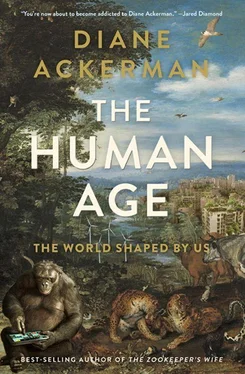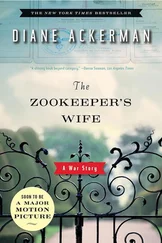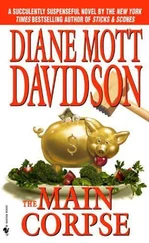As America’s first climate-change refugees, the Yup’ik have appealed to the state and federal government for help, but, according to international law, people only qualify as refugees if they’re fleeing violence, war, or persecution. And federal disaster relief laws only grant money to repair infrastructure and damage in place , not to help with relocation after slow-motion disaster. Our humanitarian laws aren’t keeping up with the Anthropocene’s environmental realities. Robin Bronen, an Anchorage-based human rights lawyer and a frequent visitor to Newtok, is working tirelessly to change them.
“This is completely a human rights issue,” she argues. “When you are talking about a people [the Yup’ik tribe] who have done the least to contribute to our climate crisis facing such dramatic consequences as a result of climate change, we have a moral and legal responsibility to respond and provide the funding needed so that these communities are not in danger.”
When the residents of Newtok do move to their new town of Mertarvik on Nelson Island, a mere nine miles away, most will return to their familiar ice-coast life of subsistence fishing, but they’ll be exemplars of a different epoch.
Tuvalu, another palm-frond island country in the South Pacific, has begun evacuating its people to New Zealand. And the president of Kiribati, an island nation of thirty-two atolls sprinkled across 3.5 million kilometers of ocean between Australia and Hawaii, is negotiating with Fiji to buy five thousand acres of land so that his population of over 102,000 can relocate. One Kiribati native, Ioane Teitiota, appealed for refugee status to Auckland, New Zealand, arguing that none of Kiribati’s atolls is more than two meters above sea level, and therefore his life was endangered by the rising seas of global warming. The judge who heard his case found the claim novel, but not persuasive.
Brainstorming from Equator to Ice
Such claims may soon become less novel, but fortunately humans are gifted with a taste for the novel that’s leading us to some innovative responses—not only old-style mechanical solutions like fossil-fuel-powered Industrial Age steel floodgates, but promising new ways of addressing root causes and harnessing solar power.
Some countries have been stalwartly battling tides for years. Maeslantkering, one of the largest moving structures on Earth, is part of a network of sluices, dams, dykes, levees, and storm surge barriers protecting the Netherlands from the blustery North Sea. Galveston, Texas, is designing what will be the United States’s longest sea wall, affectionately known as the “Ike Dike,” to protect the low-lying city from impending floods. In Venice, the $5.5 billion MOSE Project—seventy-eight mobile, underwater steel gates—will isolate the Venetian lagoon from the Adriatic Sea and shield the city from floods.
In London, gated crusaders are already at their posts. Like a row of giant knights standing up to their necks in water, armor gleaming, weapons hidden, the Thames Barrier spans the river near Woolwich, downstream of central London. Behind each helmet looms an antique vision of the brain, all levers and hydraulics. Trapped in futuristic folded steel, the fixtures appear lighter than water, though in reality each gate weighs about 3,300 tons. Altogether they can close ranks beneath the waves to protect the city from storm surges.
Like so many other rivers, the Thames is not as wide as it used to be. We encrust the banks of our rivers with shops and houses, nosing out into the water, as if we long to be osmotically part of the current, in the process narrowing channels and putting our lives and property at risk. London has flooded famously in the past—307 people died in the 1953 flood—and with the world’s sea levels rising, and the city steadily sinking at a foot a century, it needs not so much Knights Templar as Knights Temperature.
In mild days and years, the gates lie open, and you can sail between the five-story-high helmets, admiring their sleek beauty and wondering what London’s son John Milton would have made of them in the 1600s. “They also serve who only stand and wait,” he wrote in a sonnet about his blindness. He meant himself, serving God, but the Knights of the Order of the Barrier also stand and wait, reminding Londoners of climate change’s reality, and how it will play out in their backyards, streets, and wharves if they don’t take steps. Meanwhile gleaming guards defend the shores. Peer into their faces and darkness greets you. They will serve a few years more before their metal weakens and they’re replaced by newer and abler paladins.
There is something ironic and fitting about using the very process that has led to trouble—the burning of fossil fuels—to forge the protectors to combat the ongoing sequelae of that very climate change, technological lords of deliverance we hope will protect us from ourselves. Better to harness the sun.
One of the most heartening solar stories comes from northwestern Bangladesh, home to the world’s largest floodplain. Even though it’s not raining at the moment, the humidity is nearly 100 percent, and the air feels thick as rubber. The monsoon season is ending, and though the sky can still rip with fierce downpours, children wearing colorful tunics and trousers hurry to the riverbank to board their solar-powered school boat. Older villagers wait for the health boat or library boat or agricultural extension boat. Thanks to one man’s ingenuity and generosity of spirit, hope floats whenever it floods.
Mohammed Rezwan, an architect and climate-change activist who grew up here, ached to see his country being ravaged by ever-worsening floods. He’s noticed that as temperatures rise and more snow melts in the Himalayas, more water surges across the Bangladeshi floodplain. Every year one-third of Bangladesh lies underwater, as if a giant eraser annually scrubs away the hand-drawn pictures of family life.
Rezwan decided that he didn’t want to design buildings only to see them and whole communities washed away before his eyes. So, in 2008, he founded Shidhulai Swanirvar Sangstha (which means “self-reliance”), a nonprofit that deploys a fleet of one hundred boats with shallow drafts that can skim across the lowlands, serving as libraries, schools, health clinics, and three-tiered floating gardens. He persuaded local boat builders to outfit these traditional bamboo boats with solar panels, computers, video conferencing, and Internet access. The fleet also provides volunteer doctors, solar-powered hurricane lanterns, and bicycle-powered pumps. Solar batteries on each boat can power cell phones and computers, and people may recharge lamps to take home—provided their children keep attending school. Thus far, the project reaches 90,000 families, and it expects to reach another 81,500 families by 2015.
Because people become stranded and can’t feed themselves in flood season, Rezwan invented a technique for them he calls “solar water farming.” As he explains: “The system includes floating beds made of water hyacinth (to grow vegetables), a portable circular enclosure created by fishing net and bamboo strips (to raise fish), and a floating duck coop powered by solar lamps. It has a recycling system—duck manure is used as fish food, cold-water hyacinth beds are sold as organic fertilizer, and the sun energy lights up the duck coop to maintain the egg production.”
So giggling children attend school, even during flood months, and their families can produce food and clean water despite the deluges. In this way, if monsoons or conflicts push people from their homes, the flotilla creates lifesavers of education, medicine, food, lighting, and communication.
Rezwan can’t single-handedly fight climate change, but his brilliantly simple solution is helping people adapt. The words “adaptation” and “mitigation” are appearing more and more often in the lexicon of climate scientists, who use them to cover practical (and impractical) responses to climate change.
Читать дальше












